The Gilliam Autism Rating Scale (GARS) is a widely recognized diagnostic tool used by professionals to identify autism spectrum disorder (ASD) in individuals. Developed by James E. Gilliam, the GARS aims to provide a reliable and valid measure of autism symptoms across various age groups. This guide will explore the features, applications, and significance of the GARS in the assessment of autism.
Purpose of GARS
The primary purpose of the GARS is to assist in the early identification and diagnosis of autism. Early detection is crucial for initiating timely interventions that can significantly improve the quality of life for individuals with autism. By using standardized criteria, the GARS helps ensure that diagnoses are accurate and consistent across different settings and practitioners.
Components of the GARS-3 Kit
Examiner’s Manual
The Examiner’s Manual provides detailed instructions on how to administer the test, score responses, and interpret results. It includes technical information crucial for understanding the psychometric properties of the GARS-3, ensuring that the test is used correctly and effectively.
Summary/Response Forms
The Summary/Response Forms are completed by the examiner and capture key information about the examinee. These forms include demographic details, responses to the scale items, and critical data necessary for diagnosing ASD. They serve as a comprehensive record of the assessment process and outcomes.
Instructional Objectives for Individuals Who Have Autism Booklet
The Instructional Objectives for Individuals Who Have Autism booklet is a valuable resource for parents and professionals. It helps in developing instructional goals and behavioral interventions tailored to the specific needs of individuals with autism. The booklet is based on the findings from the diagnostic instrument, providing practical guidance for effective intervention planning.
Subscales of the GARS-3
The GARS-3 includes six subscales that align with the DSM-5 and the American Psychiatric Association (APA) definitions of autism spectrum disorder. Each subscale assesses different dimensions of behavior and functioning in individuals with autism.
Restricted/Repetitive Behaviors
The Restricted/Repetitive Behaviors subscale consists of 13 items that evaluate repetitive and stereotyped behaviors. These behaviors are hallmark features of autism and include activities such as hand-flapping, rocking, and repetitive use of objects.
Social Interaction
The Social Interaction subscale includes 14 items that measure the ability to engage and interact with others. This subscale assesses skills such as eye contact, peer relationships, and responsiveness to social cues, which are often impaired in individuals with autism.
Social Communication
The Social Communication subscale, comprising 9 items, evaluates both verbal and non-verbal communication skills. It looks at language development, the use of gestures, and the capacity to initiate and sustain conversations, all of which are critical for effective social interaction.
Emotional Responses
The Emotional Responses subscale includes 8 items that assess how individuals with autism respond emotionally to various situations. This subscale evaluates emotional regulation, sensitivity to environmental changes, and the appropriateness of emotional expressions.
Cognitive Style
The Cognitive Style subscale consists of 7 items that examine patterns of thinking and cognitive processing. It looks at how individuals with autism perceive and interpret information, focusing on areas such as attention to detail, rigidity in thinking, and problem-solving approaches.
Maladaptive Speech
The Maladaptive Speech subscale, containing 7 items, assesses speech patterns that are atypical or socially inappropriate. This includes echolalia (repetitive speech), unusual tone or pitch, and other speech anomalies commonly observed in individuals with autism.
Administering the GARS
The GARS is typically administered by a trained professional, such as a psychologist, psychiatrist, or special education specialist. The process involves:
- Observation and Rating: Observing the individual’s behavior and rating it based on specific criteria outlined in the GARS manual.
- Parent and Teacher Input: Collecting information from parents, teachers, and caregivers to provide a comprehensive view of the individual’s behavior across different settings.
- Scoring and Interpretation: Scoring the responses and interpreting the results to determine the likelihood of an autism diagnosis.
GARS-3 identifies four probability levels for having ASD:
- Level 0: Autism Index ≤ 54, indicating it is “unlikely”
- Level 1: Autism Index between 55 and 70, indicating the need for “minimal support”
- Level 2: Autism Index between 71 and 100, indicating it is “very likely” and requiring substantial support
- Level 3: Autism Index ≥ 101, indicating it is “very likely” and requiring very substantial support
Reliability and Validity
The GARS is known for its high reliability and validity, making it a trusted tool in the field of autism assessment. Reliability refers to the consistency of the results when the test is administered multiple times, while validity indicates how well the test measures what it is intended to measure.
Benefits of Using the GARS
Using the GARS offers several benefits, including:
- Standardized Assessment: Provides a uniform method for evaluating autism symptoms.
- Early Detection: Facilitates early identification of autism, allowing for timely intervention.
- Comprehensive Evaluation: Assesses multiple dimensions of behavior, providing a holistic view of the individual’s symptoms.
- Informing Interventions: Helps in developing personalized intervention plans based on the specific needs of the individual.
Practical Applications of the GARS
The GARS is not only a diagnostic tool but also a practical resource for guiding interventions and support strategies. Here are some key applications:
1. Individualized Education Plans (IEPs)
The GARS can play a critical role in developing Individualized Education Plans (IEPs) for students with autism. By identifying specific areas of need, such as social communication or repetitive behaviors, the GARS helps educators and therapists create targeted goals and accommodations. For example:
- A student with high scores in the Social Interaction subscale may benefit from social skills training.
- A student with significant Restricted/Repetitive Behaviors may require sensory breaks or alternative communication methods.
2. Behavioral Interventions
The GARS provides valuable insights into an individual’s behavioral profile, which can inform the design of behavioral interventions. For instance:
- If the Maladaptive Speech subscale indicates echolalia, a speech therapist can focus on functional communication strategies.
- If the Emotional Responses subscale reveals difficulties with emotional regulation, a psychologist can introduce mindfulness or coping techniques.
3. Family Support
The GARS can help families better understand their child’s strengths and challenges. By sharing the results with parents, professionals can:
- Provide guidance on how to support their child at home.
- Recommend community resources, such as support groups or therapy services.
- Empower families to advocate for their child’s needs in educational and social settings.
The Role of the GARS in Educational Settings
Schools play a vital role in identifying and supporting students with autism. The GARS is a valuable tool for educators and school psychologists because it:
- Standardizes the Assessment Process: Ensures that all students are evaluated using the same criteria, reducing bias and inconsistency.
- Supports Early Intervention: Helps identify autism symptoms early, allowing schools to implement interventions before challenges become more pronounced.
- Facilitates Collaboration: Encourages teamwork among teachers, parents, and specialists to create a cohesive support plan for the student.
Case Example: Using the GARS in a School Setting
Imagine a 7-year-old student who struggles with social interactions and exhibits repetitive behaviors. A school psychologist administers the GARS and finds:
- High scores in the Social Interaction and Restricted/Repetitive Behaviors subscales.
- Moderate scores in the Social Communication subscale.
Based on these results, the school team develops an IEP that includes:
- Social skills groups to improve peer interactions.
- Sensory breaks to address repetitive behaviors.
- Speech therapy to enhance communication skills.
Comparing the GARS to Other Autism Assessment Tools
While the GARS is a widely used tool, it is important to understand how it compares to other autism assessments, such as the Autism Diagnostic Observation Schedule (ADOS) and the Childhood Autism Rating Scale (CARS).
1. GARS vs. ADOS
- GARS: Focuses on behavioral observations and caregiver reports. It is quicker to administer and score, making it suitable for screening and initial assessments.
- ADOS: A more in-depth, interactive assessment that involves direct interaction with the individual. It is often used for formal diagnosis but requires extensive training to administer.
2. GARS vs. CARS
- GARS: Includes six subscales that align with DSM-5 criteria, providing a comprehensive evaluation of autism symptoms.
- CARS: A simpler tool that uses a 15-item scale to rate autism severity. It is less detailed than the GARS but can be useful for quick screenings.
When to Use the GARS
The GARS is particularly useful in settings where:
- A quick and reliable screening tool is needed.
- Input from multiple sources (e.g., parents, teachers) is available.
- A comprehensive evaluation of autism symptoms is required to inform interventions.
Cultural Considerations in Using the GARS
One limitation of the GARS is its potential lack of cultural sensitivity. Autism symptoms may manifest differently across cultures, and some behaviors considered atypical in one culture may be normative in another. To address this:
- Cultural Adaptation: Professionals should consider cultural context when interpreting GARS results. For example, avoiding eye contact may be a sign of respect in some cultures rather than a symptom of autism.
- Collaboration with Families: Engaging families in the assessment process can provide valuable insights into cultural norms and behaviors.
- Supplemental Tools: Using culturally adapted assessments alongside the GARS can ensure a more accurate and inclusive evaluation.
Limitations and Considerations
While the GARS is a valuable tool, it is essential to consider its limitations. These include:
- Cultural Sensitivity: The GARS may not account for cultural differences in behavior and communication.
- Subjectivity: The rating process can be subjective, as it relies on the observations and judgments of the rater.
- Complementary Assessments: The GARS should be used in conjunction with other diagnostic tools and assessments to ensure a comprehensive evaluation.
Future Directions for the GARS
As our understanding of autism evolves, so too must the tools we use to assess it. Future developments for the GARS could include:
- Digital Administration: Developing a digital version of the GARS to streamline data collection and analysis.
- Cultural Adaptations: Creating culturally adapted versions of the GARS to improve its applicability in diverse populations.
- Integration with Technology: Incorporating wearable devices or apps to track behaviors in real-time, providing more objective data for assessment.
The Gilliam Autism Rating Scale is an indispensable tool in the assessment of autism spectrum disorder. By providing a structured and standardized approach to evaluating autism symptoms, the GARS plays a crucial role in the early detection and diagnosis of autism. This, in turn, enables the implementation of targeted interventions that can significantly enhance the lives of individuals with autism and their families.
Read More:




